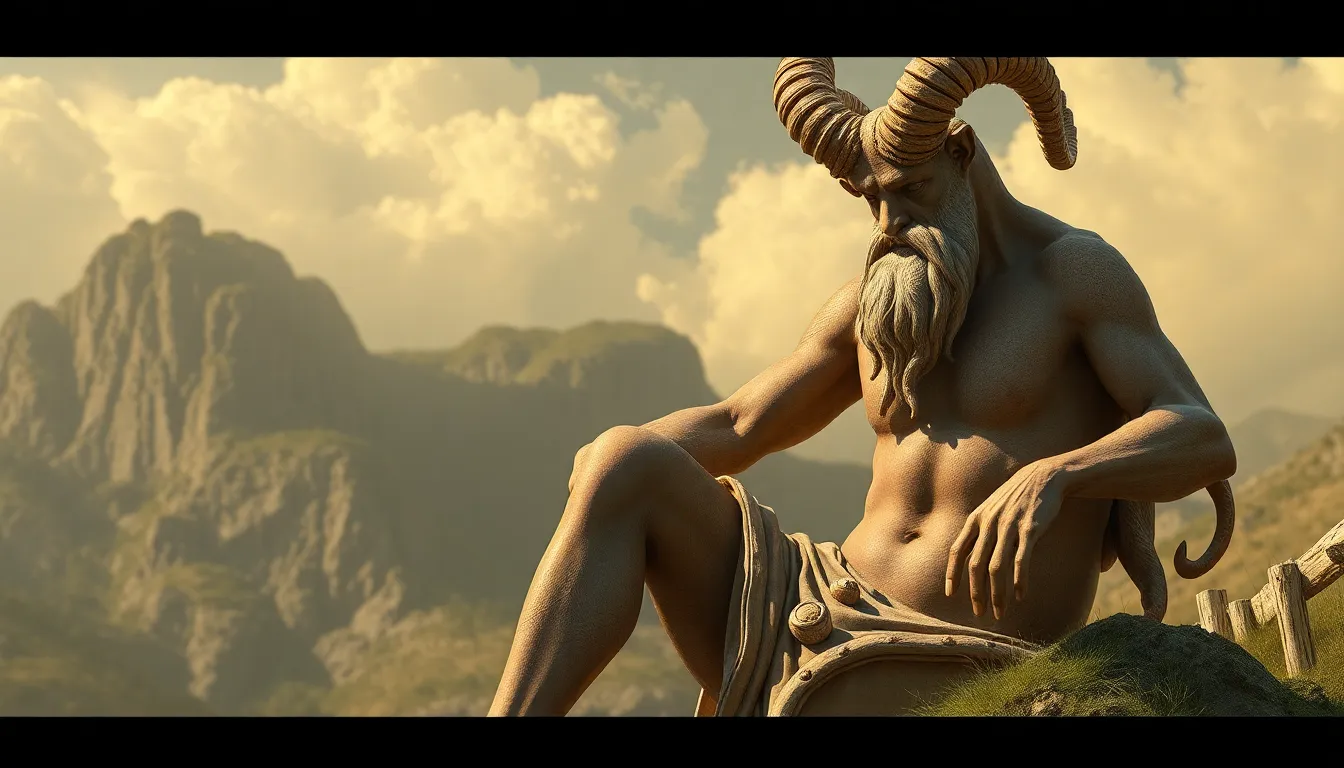The Satyr’s Influence on Fantasy Literature: From Myth to Modern Fantasy
I. Introduction
In the rich tapestry of Greek mythology, satyrs are fascinating creatures often depicted as half-man, half-goat beings associated with nature, music, and revelry. Defined by their playful and mischievous natures, satyrs embody the spirit of freedom and the untamed aspects of the natural world. In ancient Greek culture, they served as companions to Dionysus, the god of wine and ecstasy, reinforcing their connection to themes of indulgence and chaos. This article aims to explore how the satyr has influenced fantasy literature throughout the ages, from its mythological origins to its modern interpretations in various literary works.
II. The Origins of the Satyr in Greek Mythology
Satyrs first appeared in ancient texts as woodland deities, often portrayed with animalistic features such as goat legs, pointed ears, and a penchant for music and dance. They were known for their hedonistic lifestyles and as symbols of the primal aspects of human nature. Some key points regarding satyrs in ancient mythology include:
- Description: Satyrs are often described as joyful, drunken beings who revel in music, dance, and the pursuit of pleasure.
- Connection to Dionysian Themes: Their close association with Dionysus highlights their role in celebrating life, fertility, and the joys of nature.
- Symbolism: Satyrs represent nature’s wildness, chaotic energy, and the balance between civilization and the untamed aspects of existence.
III. Transition from Myth to Literature
As Greek mythology evolved into literary traditions, satyrs found their place in various classical works. Notable early references include:
- Classical Works: Satyrs appeared in plays by Euripides and Aristophanes, often as comic relief or as embodiments of nature’s chaos.
- Roman and Renaissance Literature: The satyr archetype was further explored in Roman poetry and later in Renaissance works, where they were often romanticized.
- Evolution: Over the centuries, the satyr’s image transformed, reflecting changing societal views on nature, freedom, and excess.
IV. The Satyr’s Role in 19th-Century Fantasy Literature
The 19th century marked a significant revival of interest in mythological themes, particularly during the Romantic period. The satyr emerged as a potent symbol, represented in various literary works:
- Romanticism: Writers of this era celebrated nature and the wild, often using satyrs to symbolize the untamed spirit of humanity.
- Notable Works: Authors like John Keats and Percy Bysshe Shelley incorporated satyr-like figures to explore themes of desire and beauty.
- Representation: The satyr became a representation of wildness, embodying the conflict between civilization and the primal urges that lie beneath.
V. The Satyr in Modern Fantasy Literature
In contemporary fantasy literature, satyrs continue to play an intriguing role, often blending traditional characteristics with modern themes. Some notable aspects include:
- Contemporary Authors: Many fantasy authors, such as Rick Riordan and C.S. Lewis, have incorporated satyrs into their narratives, showcasing their enduring appeal.
- Case Studies:
- “The Chronicles of Narnia”: Mr. Tumnus, a faun (similar to a satyr), represents kindness and the struggle against tyranny.
- “Percy Jackson”: Grover Underwood, a satyr, embodies loyalty and the importance of nature, acting as a protector of the environment.
- Evolution: The modern satyr often reflects contemporary values, such as environmentalism and the celebration of diversity.
VI. Thematic Elements Associated with Satyrs
Satyrs are often associated with various thematic elements that resonate within fantasy literature:
- Exploration of Nature: Satyrs symbolize the beauty and chaos of nature, serving as reminders of humanity’s connection to the natural world.
- Freedom and Hedonism: They embody the pursuit of pleasure and the joys of life, often challenging societal norms and constraints.
- Chaos and Order: Satyrs represent the balance between chaos and order, often acting as catalysts for change within fantasy narratives.
- Human and Animalistic Traits: Their hybrid nature exemplifies the duality of human existence, bridging the gap between civilization and primal instincts.
VII. The Satyr’s Influence on Popular Culture
The appeal of satyrs extends beyond literature into various forms of popular culture, including:
- Film and Television: Satyrs are depicted in films such as “Pan’s Labyrinth” and series like “Once Upon a Time,” where they often embody whimsical and chaotic traits.
- Video Games: Many video games, such as “God of War,” feature satyr-like creatures, often as adversaries or allies within fantasy realms.
- Broader Fantasy Tropes: The characteristics of satyrs have influenced various fantasy tropes, such as the trickster archetype and nature spirits.
VIII. Conclusion
The journey of the satyr from ancient mythology to modern fantasy literature showcases the enduring legacy of this archetype. Satyrs, with their rich symbolism and multifaceted characteristics, continue to inspire authors and creators across genres. As we move forward, the satyr’s role in storytelling remains relevant, reminding us of the importance of nature, freedom, and the wild aspects of our own humanity. Future explorations of satyrs in literature will likely reveal new interpretations and adaptations, ensuring their place as timeless figures in the realm of fantasy.




